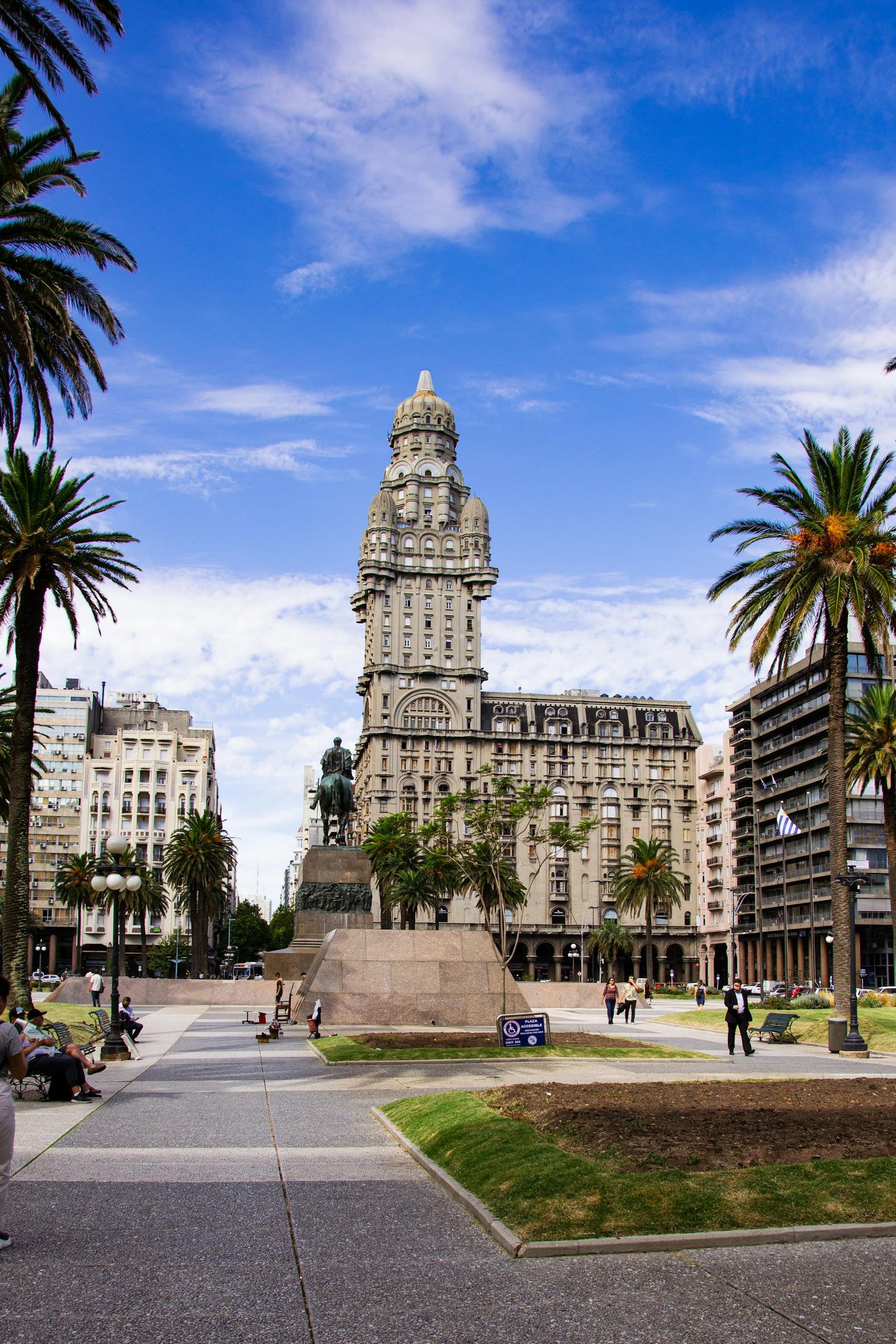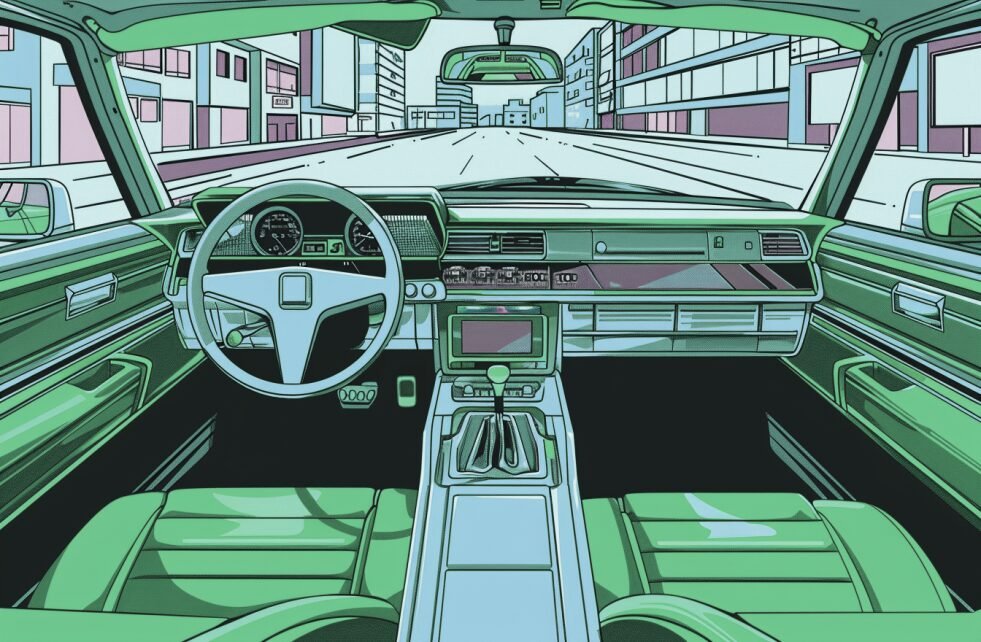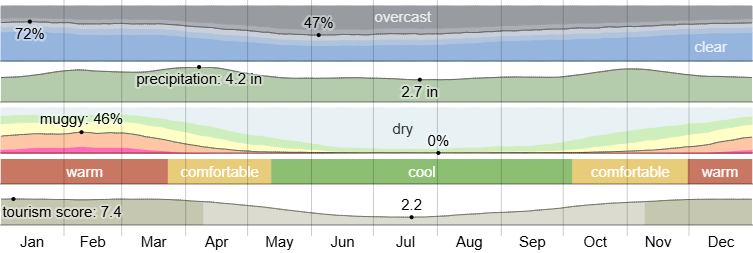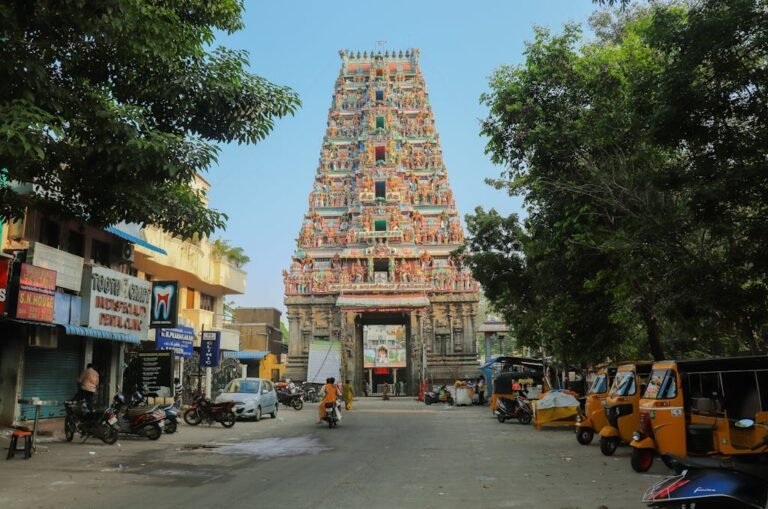Explore Montevideo, Uruguay
Your Expat Roadmap: Explore comprehensive city guides, download valuable resources, and get insider travel recommendations curated for expats.
This rating is based on personal experiences, reader feedback, and research done with expat living in mind.
Worldwide Stats for Montevideo
Out of 227 cities ranked worldwide, for cost of living and quality of life, here is how Montevideo stacks up:


Montevideo: Where European Charm Meets South American Soul
Montevideo, Uruguay’s vibrant capital, exudes a unique blend of old-world European charm and lively South American spirit. With a population of approximately 1.4 million (as of 2023), it’s a relatively small capital city, contributing to its relaxed and friendly atmosphere.
Originally called San Felipe y Santiago de Montevideo, the city’s history is intertwined with its strategic port location on the Río de la Plata. Founded by the Spanish in the 18th century, Montevideo quickly became a vital trading hub and witnessed periods of both prosperity and conflict. Today, remnants of its colonial past can be seen in the Ciudad Vieja (Old City), while modern neighborhoods showcase a progressive and forward-thinking city.
Everyday life in Montevideo unfolds at a leisurely pace. Locals, known as Montevideanos, enjoy strolling along the Rambla, a scenic coastal promenade, sipping mate (a traditional herbal drink), and engaging in lively conversations in cafes and pulperías (traditional bars). The city boasts a rich cultural scene, with tango music filling the air and a thriving arts community.
Geographically, Montevideo sits on the southeastern coast of Uruguay, facing the Atlantic Ocean and the Río de la Plata. It’s a gateway to other Uruguayan destinations, such as the beach town of Punta del Este and the historic city of Colonia del Sacramento, and is relatively close to Buenos Aires, Argentina, accessible by ferry or plane.
More Stats on Montevideo
40% Lower cost of living, compared to Washington, DC.
Comfortable, Low humidty, year-round (7°C – 26°C /
45°F – 80°F).
A safety Score of 44. Montevideo is Considered Moderately safe.
English is moderately spoken. Spanish Will Be Beneficial for expats Dailyd.
Expat Living in Montevideo
People & Culture of Montevideo
Montevideo’s residents, known as Montevideanos, possess a distinct cultural identity shaped by European immigration, particularly from Spain and Italy, and a strong sense of national pride. They are generally known for their relaxed and friendly demeanor, enjoying a slower pace of life than many other major cities. Social connections are highly valued, with gatherings in cafes, pulperías (traditional bars), and along the Rambla (coastal promenade) a common pastime.
- Language: Spanish is the official language, spoken with a distinct Uruguayan accent. While English proficiency is growing, particularly among younger generations and in tourist areas, knowing some basic Spanish will greatly enhance your experience.
- Culture: Montevideanos are passionate about their cultural heritage, which is evident in the city’s numerous theaters, museums, and art galleries. Literature is highly regarded, and the city has produced many renowned writers. Football (soccer) is a national obsession, and attending a match at the Estadio Centenario is a must for any sports enthusiast.
- Religion: Uruguay is a secular state with no official religion. While Catholicism has historically been the dominant religion, there is a growing number of non-religious individuals, as well as small communities of other faiths.
- Food: Uruguayan cuisine is heavily influenced by its gaucho heritage and European roots. Beef is a staple, with parrilladas (barbecues) a popular social event. Mate, a traditional herbal drink, is ubiquitous and shared among friends and family. Chivitos (steak sandwiches) and alfajores (caramel cookies) are other local favorites.
- Music: Tango holds a special place in Uruguayan culture, although it is often associated more strongly with neighboring Argentina. Candombe, a vibrant Afro-Uruguayan musical genre, is a unique expression of the country’s diverse heritage and is particularly prominent during Carnival.
- Other Cultural Aspects: Montevideanos value their free time and enjoy spending it with loved ones. The city’s many parks and green spaces provide ample opportunities for outdoor activities. Uruguay has a reputation for its progressive social policies, contributing to a tolerant and inclusive environment.
The Warmth of the Montevideanos: A Welcoming City
Montevideanos are generally known for their warm and welcoming nature, and their relaxed approach to life extends to their interactions with visitors and expats. They are often described as friendly, approachable, and eager to share their culture. While perhaps not as overtly effusive as some other Latin American cultures, their hospitality is genuine and sincere.
Expats often find Montevideanos to be accommodating and helpful. While Spanish is the official language, and the primary language spoken in daily life, English proficiency is increasingly common, especially among younger generations and those working in tourism or international businesses. In the city center and tourist areas, you’ll likely encounter people who speak at least some English. However, learning some basic Spanish will undoubtedly enhance your experience and facilitate deeper connections with locals.
While Uruguay is generally considered a safe and welcoming country for expats, including Americans, it’s always wise to be mindful of your surroundings and practice common-sense safety precautions, as you would in any major city. Overall, Montevideanos are known for their open-mindedness and tolerance, contributing to a positive experience for those who choose to make Montevideo their home.
Montevideo Cost of Living: A Comparison with Washington DC and London
Montevideo’s cost of living is generally considered moderate compared to major global cities. While not as inexpensive as some other South American capitals, it offers a good balance between affordability and quality of life, especially when compared to cities like Washington, D.C., and London. For a family of three, careful budgeting is still important, but a comfortable lifestyle is achievable.
Here’s a comparison of some essential costs for a family of three in Montevideo, Washington, D.C., and London.
| Expense Category | Montevideo (Uruguayan Pesos) | Washington, D.C. (US Dollars) | London (British Pounds) |
| Grocery Bill (Weekly) | $U4,000 – 6,000 | $150-200 | £120-160 |
| Inexpensive Meal at a Restaurant | $U300 – 500 | $15-25 | £12-18 |
| Basic Utilities (Monthly) | $U3,000 – 5,000 | $150-200 | £120-160 |
| Internet (Monthly) | $U1,000 – 2,000 | $40-70 | £30-50 |
| Fitness Membership (Monthly) | $U2,000 – 4,000 | $75-150 | £60-120 |
| Part-Time Housekeeper (Hourly) | $U200 – 300 | $7-10 | £6-8 |
Source: https://currencyrate.today/converter-widget
Please Note:
- These are approximate costs and can vary depending on individual lifestyle choices, family size and needs, housekeeper experience, and current exchange rates.
- Grocery bills and restaurant costs are estimated for a family of 3 with moderate eating habits.
- Housekeeper costs can vary significantly based on experience, workload, accommodation provided (live-in vs. hourly), and other factors.
It’s crucial to research specific costs and adapt the table to your family’s specific needs and preferences. Consider consulting with expats living in Uruguay or contacting relocation agencies for more tailored information.
Overall, Montevideo has a lower cost of living than most other places in the world. Some expats find Montevideo to be a perfect fit for them and their families, while others can find it challenging to completely enjoy their life there, financially speaking.
Climate in Montevideo: Four Seasons with a Coastal Breeze
Montevideo enjoys a temperate climate with four distinct seasons, influenced by its coastal location on the Río de la Plata. This means relatively mild temperatures year-round, though humidity can be a factor.
Temperatures:
- Average High: 26°C (80°F)
- Average Low: 7°C (45°F)
Temperatures remain relatively consistent throughout the year, with mild variations between day and night. However, the city can experience occasional cool spells during the rainy season.
Temperatures:
- Summer (December – February): Average highs range from 25°C to 30°C (77°F to 86°F). Expect warm, sunny days, though occasional heat waves can push temperatures higher.
- Autumn (March – May): Temperatures gradually cool down, with average highs between 20°C and 25°C (68°F to 77°F). This is a pleasant season with comfortable weather.
- Winter (June – August): Average highs range from 10°C to 15°C (50°F to 59°F). While temperatures rarely drop below freezing, the humidity can make it feel colder. Occasional frosts are possible.
- Spring (September – November): Temperatures begin to rise again, with average highs between 15°C and 20°C (59°F to 68°F). This is another pleasant season with blooming flowers and comfortable weather.
Rainy Season:
Rainfall is distributed fairly evenly throughout the year, though there can be slightly more rain during autumn and winter. Heavy downpours are possible at any time of year, but they are usually short-lived.
Severe Weather:
Montevideo is generally spared from major natural disasters. Earthquakes are rare, and the city is not in a hurricane or cyclone path. Wildfires are not a significant concern. However, strong winds and occasional storms, especially during winter, can sometimes disrupt transportation and services.
Air Quality in Montevideo:
Montevideo generally enjoys good air quality. Average AQI levels are typically low, reflecting the city’s relatively low levels of industrial pollution and its coastal location, which helps disperse pollutants. However, it’s always advisable to check local air quality reports, especially during periods of high traffic or specific weather conditions.
Best Time to Visit Montevideo:
The best time to visit Montevideo depends on your preferences. For warm weather and beach activities, summer (December – February) is ideal. However, this is also the peak tourist season. Autumn (March – May) and spring (September – November) offer pleasant weather with fewer crowds, making them excellent choices for exploring the city and enjoying outdoor activities. Winter (June – August) can be chilly and damp, but it can also be a cozy time to experience the city’s cultural scene and enjoy its cafes and restaurants.
Traffic and Driving in Montevideo: Navigating the City Streets
Montevideo’s traffic can be busy, particularly during peak hours and in the city center, but it’s generally manageable compared to larger metropolises. While public transportation is readily available and a popular choice for many, driving offers flexibility for exploring the city and surrounding areas.
Driving in Montevideo:
- Driving on the Right: Uruguayans drive on the right side of the road, which is the standard for most Latin American countries.
- Obtaining a Driver’s License: Expats can drive in Uruguay using their valid international driving permit for a limited time (usually 90 days). For longer stays, it’s advisable to obtain a Uruguayan driver’s license. This typically involves passing a theoretical and practical driving test. The requirements and process can vary, so it’s best to check with the local authorities (Intendencia Municipal de Montevideo) for the most up-to-date information.
- Motorcycle Licenses: Obtaining a motorcycle license in Uruguay follows a similar process to getting a car driver’s license, requiring both written and practical tests.
- Traffic and Road Conditions: Road conditions in Montevideo are generally good, especially in the city center. However, some streets in older neighborhoods or outside the city might be less well-maintained. Traffic can be heavy during rush hour, and parking in the city center can be challenging.
- Driving in the City: Driving in Montevideo is generally not considered overly difficult, though it requires attention and awareness of local traffic customs. Traffic signals are generally respected, but drivers can be assertive.
- Expats Driving or Hiring Drivers: Many expats in Montevideo choose to drive, finding it a convenient way to get around. Others opt for a combination of driving and using ride-sharing apps or taxis, depending on the situation. Hiring a driver is less common for everyday commuting but might be considered for longer trips or when navigating unfamiliar areas.
- Other Relevant Information: It’s important to be aware of local traffic laws and regulations. Using a GPS or navigation app can be helpful, especially when exploring less familiar areas. Be sure to have all necessary vehicle documentation and insurance.

Additional Driving Tips:
- Learn Basic Spanish: Knowing some basic Spanish phrases can be helpful when interacting with traffic police or other drivers.
- Avoid Driving at Night: While it is possible to drive at night, it is generally safer to avoid driving during dark hours, as there may be fewer streetlights and increased risks of accidents.
- Use Caution at Intersections: Intersections in Montevideo can be chaotic, and drivers may not always yield to others. Use caution and be prepared to stop or swerve to avoid accidents.
- Consider a GPS: A GPS device or navigation app can be helpful for navigating Montevideo roads, especially if you are unfamiliar with the city.
Public Transportation in Montevideo: Buses and Beyond
Montevideo boasts a comprehensive public transportation system, primarily relying on an extensive network of buses. These buses, operated by various companies, crisscross the city, connecting neighborhoods and providing access to most areas.
Buses:
Buses are the backbone of Montevideo’s public transport. They are generally affordable and run frequently, though they can get crowded during peak hours. You can pay for your fare in cash directly to the driver or use an STM card, a rechargeable card that offers discounted fares.
Taxis and Ride-Sharing:
Taxis are readily available in Montevideo and can be hailed on the street or booked through apps or by phone. Ride-sharing services like Uber are also present in the city, providing convenient alternatives.
Other Options:
While less common for daily commutes, Montevideo also offers other transportation options:
- Tourist Bus: A hop-on-hop-off tourist bus is available for exploring the city’s main attractions at your own pace.
- Bike Rentals: Cycling is a popular activity in Montevideo, and bike rentals are available for those who want to explore the city on two wheels, especially along the Rambla.
Excursions Outside the City:
For excursions outside of Montevideo, several options are available:
- Intercity Buses: Long-distance buses connect Montevideo to other cities and towns in Uruguay. These are a common and affordable way to travel the country.
- Rental Cars: Renting a car provides flexibility for exploring areas at your own pace, especially if you plan to visit more remote destinations.
- Organized Tours: Many tour operators offer day trips and excursions from Montevideo to popular destinations like Punta del Este or Colonia del Sacramento.
Overall, Montevideo offers a diverse range of public transportation options, making it easy to get around both within the city and to explore other parts of Uruguay.
Conclusion: Driving and Transportation in Montevideo
In summary, Montevideo offers a well-developed and relatively easy-to-navigate transportation system. The extensive bus network is the primary mode of public transport, providing affordable access to most parts of the city. Taxis and ride-sharing services offer convenient alternatives, while intercity buses and rental cars facilitate travel beyond Montevideo. While driving within the city is possible, it’s not always necessary, and many expats find a combination of public transport, taxis, and ride-sharing to be the most efficient and convenient way to get around.
Internet and Electricity in Montevideo: Staying Connected and Powered Up
Montevideo boasts a reliable and increasingly robust internet infrastructure. Broadband and fiber optic connections are widely available throughout the city, offered by various providers. While speeds can vary depending on the provider and specific location, most areas enjoy good connectivity suitable for streaming, video conferencing, and other online activities. Wi-Fi is also commonly available in cafes, restaurants, and public spaces.
Uruguay operates on a 220-volt electricity supply at a frequency of 50 Hz. The most common plug types are Type C and Type F, which feature two round pins. While some Type I plugs (three flat pins) may also be encountered, it’s a good idea to pack a universal travel adapter to ensure compatibility with your devices. It’s always recommended to check the voltage requirements of your electronics before plugging them in to avoid any damage.
Montevideo uses three types of plugs:
- Type C: Two parallel circular pins
- Type F : Two parallel circular pins
- Type I: Three flat pins – less common
Before relocating, make sure to check the voltage compatibility of your electronic devices. You’ll most likely need adapters and possibly voltage converters to ensure a smooth transition and avoid damaging your belongings.



Education in Montevideo: Options for Expat Families
Montevideo offers a range of educational options for expat families, including international schools, bilingual schools, and local Uruguayan schools. The choice often depends on factors like desired curriculum, language of instruction, and budget.
International Schools:
These schools typically cater to a diverse student body and offer internationally recognized curricula, such as the International Baccalaureate (IB) program. English is often the primary language of instruction.
- The British School of Montevideo: A well-established school offering a British curriculum. (Website: https://www.british.edu.uy/)
- Uruguay American School: Provides an American-style education. (Website: https://www.uas.edu.uy/)
(Note: It’s always best to contact the schools directly for the most up-to-date information on curriculum, fees, and enrollment procedures. Information about school rankings or statistics can be challenging to find for international schools in specific cities. Look for accreditation information from organizations like the Council of International Schools (CIS) or the New England Association of Schools and Colleges (NEASC) as a marker of quality.)
Other School Options For Expats in Montevideo:
Bilingual Schools:
These schools offer instruction in both Spanish and English, providing a balance for children to develop proficiency in both languages. They may follow a blend of local and international curricula. Research is recommended as bilingual school offerings and quality can vary.
Local Schools:
Integrating into the local Uruguayan education system can be a rewarding experience, providing a deep immersion into the culture. Instruction is primarily in Spanish. While this may be a challenge initially for non-Spanish speaking children, many local schools offer support for students learning Spanish as a second language.
Pre-Schools:
Several pre-schools in Montevideo cater to younger children, and some may have experience with expat children. It’s best to visit and inquire directly about their programs, language offerings, and experience with children from diverse backgrounds. Some starting points for your research could be:
- Espacio Educativo Integral: (Website: https://colegioceei.com/)
- Jardín de Infantes: (Website: https://jardinhippo.edu.uy/)
- Montessori Schools: (Search locally for Montessori pre-schools)
Finding the right school is a personal decision. Visiting schools, speaking with current parents (if possible), and considering your child’s individual needs are essential steps in the process.
Quality of Education Disclaimer:
It’s important to note that these are just a few examples, and numerous other reputable schools and pre-schools exist in Montevideo. When choosing an educational institution, it’s crucial to consider individual needs, educational philosophies, and curriculum options. Every family’s needs are different and each child has unique educational goals and/or considerations.
Researching schools’ websites, attending open houses, and consulting with other expat families can provide valuable insights into the quality of education, school culture, and overall fit for your child. This website can only provide so much detail about schools, as curriculum, resources, and accommodations are constantly changing.
Montevideo: A City Steeped in History, Buzzing with Modern Life
Montevideo’s story is etched into its cobblestone streets and grand architecture, a testament to its rich and often turbulent past. Founded by the Spanish in the 18th century as San Felipe y Santiago de Montevideo, its strategic location on the Río de la Plata quickly made it a vital port and a point of contention between colonial powers. The city witnessed periods of both prosperity and conflict, playing a key role in Uruguay’s struggle for independence. Remnants of this colonial heritage can still be seen in the Ciudad Vieja (Old City), with its historic plazas, cathedrals, and colonial buildings. Exploring this area is like stepping back in time, offering a glimpse into Montevideo’s origins.
Today, Montevideo seamlessly blends its historical charm with a vibrant modern spirit. Beyond the Ciudad Vieja, the city boasts a thriving cultural scene, with world-class theaters, museums, and art galleries. The iconic Rambla, a sprawling coastal promenade, is the heart of Montevideano life, where locals gather to stroll, cycle, and enjoy the stunning sunsets over the Río de la Plata. The Mercado del Puerto is a must-visit for food lovers, offering a chance to savor traditional Uruguayan parrilladas (barbecues) in a lively market atmosphere. From the historic Cerro de Montevideo offering panoramic city views to the trendy neighborhoods filled with cafes and boutiques, Montevideo provides a diverse range of experiences for tourists, making it a captivating destination for those seeking a blend of history, culture, and relaxation.
| Places to Visit in Montevideo | Brief Description |
| Ciudad Vieja (Old City) | Montevideo’s historic heart, with colonial architecture, cobblestone streets, and a vibrant atmosphere. Explore the Plaza Matriz, the Metropolitan Cathedral, and the Mercado del Puerto. |
| Mercado del Puerto | A bustling market and food hall, famous for its parrilladas (barbecues). Enjoy a delicious meal and soak up the lively atmosphere. |
| Rambla of Montevideo | A scenic coastal promenade stretching for over 20 kilometers. Perfect for walking, cycling, enjoying the ocean views, and watching the sunset. |
| Teatro Solís | One of South America’s most prestigious opera houses. Take a tour or attend a performance for a cultural experience. |
| Cerro de Montevideo | A hill overlooking the city, offering panoramic views of Montevideo and the coastline. A great spot for photos and enjoying the scenery. |
| Estadio Centenario | A historic stadium, home to the first FIFA World Cup in 1930. A must-visit for football fans. |
| Museo Nacional de Artes Visuales | The National Museum of Visual Arts, showcasing Uruguayan art from the colonial period to the present day. |
| Palacio Salvo | An iconic Art Deco building in the city center. Admire its impressive architecture and take in the views from the top. |
| Plaza Independencia | A central square surrounded by important buildings, including the Presidential Palace and the Artigas Mausoleum. |
| Barrio Sur | A historic neighborhood with a strong Afro-Uruguayan cultural heritage. Explore its colorful streets and enjoy the candombe music. |
Basic Spanish Phrases for Visitors & Expats
| Meaning | Spanish Phrase | Phonetic Pronunciation |
| Hello | Buenos días (morning), buenas tardes (afternoon), buenas noches (evening) | /bweh-nos dee-as/, /bweh-nos tar-des/, /bweh-nos no-ches/ |
| How are you? | ¿Cómo estás? | /koh-moh es-tas?/ |
| Nice to meet you | Mucho gusto | /moo-cho goo-sto/ |
| Thank you | Gracias | /grah-see-as/ |
| Yes | Sí | /see/ |
| No | No | /no/ |
| How much? | ¿Cuánto cuesta? | /kwan-toh kweh-sta?/ |
| Where is the bathroom? | ¿Dónde está el baño? | /don-deh es-tah el bahn-yo?/ |
These are just a few basic phrases to get you started. Learning even a few words in Spanish can go a long way in showing respect and appreciation to the local people. Please note, that Spanish is the official language of Montevideo, but there are many other dialects spoken across the country. Make sure you research the language where you will be living as well as traveling. The further from the major cities you go the less likely people will speak English.
Unique Linguistic Quirks For Montevideo:
- Pronunciation: Uruguayan Spanish, particularly in Montevideo, has a distinctive intonation and some pronunciation differences compared to other Spanish dialects. The “s” sound at the end of words is often aspirated (pronounced like a soft “h”) or even dropped altogether. The “ll” and “y” sounds are often pronounced the same (like a “j” or “zh” sound, similar to the “s” in “measure”). These nuances can take a little getting used to, even for fluent Spanish speakers.
- Voseo: Uruguay uses voseo extensively. Instead of the formal “tú” (you), they use “vos” as the informal second-person singular pronoun. The verb conjugations for “vos” are different. For example, instead of “tú hablas” (you speak), they say “vos hablás.” This is a key difference to be aware of.
- Vocabulary: While the vast majority of vocabulary is standard Spanish, there are some local words and expressions that are unique to Uruguay. These are often related to food, everyday objects, or cultural practices. Don’t be surprised if you encounter words you haven’t heard before, even if you have a good grasp of general Spanish.
- Slang: Like any region, Montevideo has its own slang. It’s constantly evolving, so it’s best to pick it up through immersion and conversations with locals. Don’t be afraid to ask what a word or phrase means if you’re unsure.
- Mate-Related Language: Since mate is such an integral part of Uruguayan culture, there’s a whole vocabulary associated with it. Knowing terms like “cebar” (to pour mate), “mate dulce” (sweet mate), or “mate amargo” (bitter mate) can be helpful.
- Influence from Other Languages: Due to its history and proximity to Brazil, Uruguayan Spanish has some influences from Portuguese, particularly in border regions. You might also hear some Italian influences in vocabulary, reflecting the significant Italian immigration to the country.
Don’t be discouraged if you find it a little challenging to understand the Montevideanos at first. With a little patience and exposure, you’ll start to pick up the nuances of their dialect and vocabulary. Most importantly, locals appreciate the effort to communicate in Spanish, even if it’s not perfect!
Montevideo: A City Waiting to be Discovered
Montevideo, Uruguay offers a unique blend of European heritage and South American charm, making it a captivating destination for expats and diplomats alike. From its relaxed pace of life and friendly locals to its rich cultural scene and beautiful coastline, there’s something to discover around every corner. Whether you’re drawn to the vibrant arts scene, the delicious cuisine, or simply the laid-back atmosphere, Montevideo promises an enriching and memorable experience.
Have you lived in or visited Montevideo, Uruguay? Share your experiences and insights in the comments below! Your contributions can help other expats and diplomats as they consider making this vibrant city their new home.
Last Updated: February 2025








